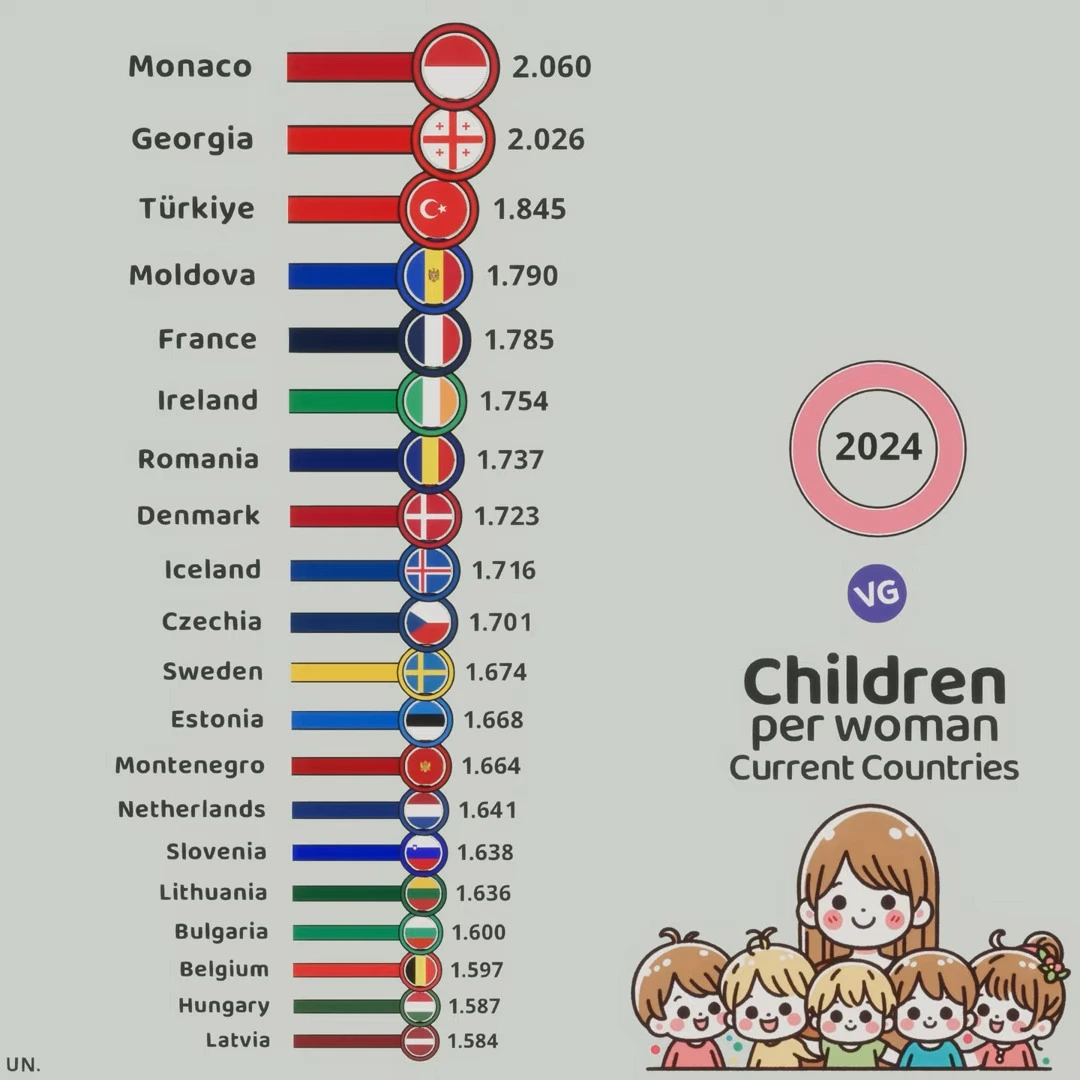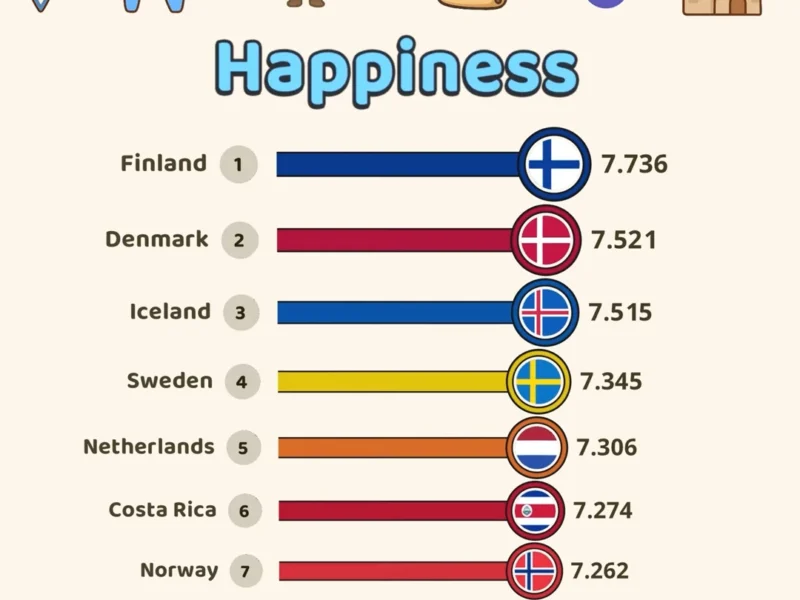The Leaders: Above 2 Children Per Woman
An interesting pattern emerges at the top of the list, where Monaco (2.060) and Georgia (2.026) are the only countries maintaining fertility rates above 2 children per woman. This puts them at replacement level fertility, which is significant in the European context.
📊 Top Countries by Fertility Rate (2024)
| Rank | Country | Children per Woman |
|---|---|---|
| 1️⃣ | Monaco 🇲🇨 | 2.060 |
| 2️⃣ | Georgia 🇬🇪 | 2.026 |
| 3️⃣ | Türkiye 🇹🇷 | 1.845 |
| 4️⃣ | Moldova 🇲🇩 | 1.790 |
| 5️⃣ | France 🇫🇷 | 1.785 |
| 6️⃣ | Ireland 🇮🇪 | 1.754 |
| 7️⃣ | Romania 🇷🇴 | 1.737 |
| 8️⃣ | Denmark 🇩🇰 | 1.723 |
| 9️⃣ | Iceland 🇮🇸 | 1.716 |
| 🔟 | Czechia 🇨🇿 | 1.701 |
| 11 | Sweden 🇸🇪 | 1.674 |
| 12 | Estonia 🇪🇪 | 1.668 |
| 13 | Montenegro 🇲🇪 | 1.664 |
| 14 | Netherlands 🇳🇱 | 1.641 |
| 15 | Slovenia 🇸🇮 | 1.638 |
| 16 | Lithuania 🇱🇹 | 1.636 |
| 17 | Bulgaria 🇧🇬 | 1.600 |
| 18 | Belgium 🇧🇪 | 1.597 |
| 19 | Hungary 🇭🇺 | 1.587 |
| 20 | Latvia 🇱🇻 | 1.584 |
Source: United Nations Population Data, 2024
Upper-Middle Range: 1.8-1.99 Children
Türkiye leads the second tier with 1.845 children per woman, followed closely by Moldova (1.790) and France (1.785). These countries maintain relatively higher fertility rates compared to most European nations, though still below replacement level.
Middle Range: 1.7-1.79 Children
A cluster of Northern and Central European countries falls in this range:
- Ireland (1.754)
- Romania (1.737)
- Denmark (1.723)
- Iceland (1.716)
- Czechia (1.701)
Lower-Middle Range: 1.6-1.69 Children
Several countries, primarily from Northern and Eastern Europe, occupy this range:
- Sweden (1.674)
- Estonia (1.668)
- Montenegro (1.664)
- Netherlands (1.641)
- Slovenia (1.638)
- Lithuania (1.636)
Lower Range: Below 1.6 Children
The countries with the lowest fertility rates include:
- Bulgaria (1.600)
- Belgium (1.597)
- Hungary (1.587)
- Latvia (1.584)
Regional Patterns
There’s a noticeable geographical pattern where:
- Southern European countries are generally underrepresented in the higher ranges
- Northern European countries tend to maintain moderate rates
- Eastern European countries show varied rates across the spectrum
- Western European countries like France maintain relatively higher rates compared to their neighbors
Implications
These fertility rates have significant implications for:
- Future population growth/decline
- Age structure of societies
- Social security systems
- Healthcare planning
- Economic growth potential
- Labor market dynamics
This data provides crucial insights for policymakers working on family policies, social support systems, and long-term demographic planning.



